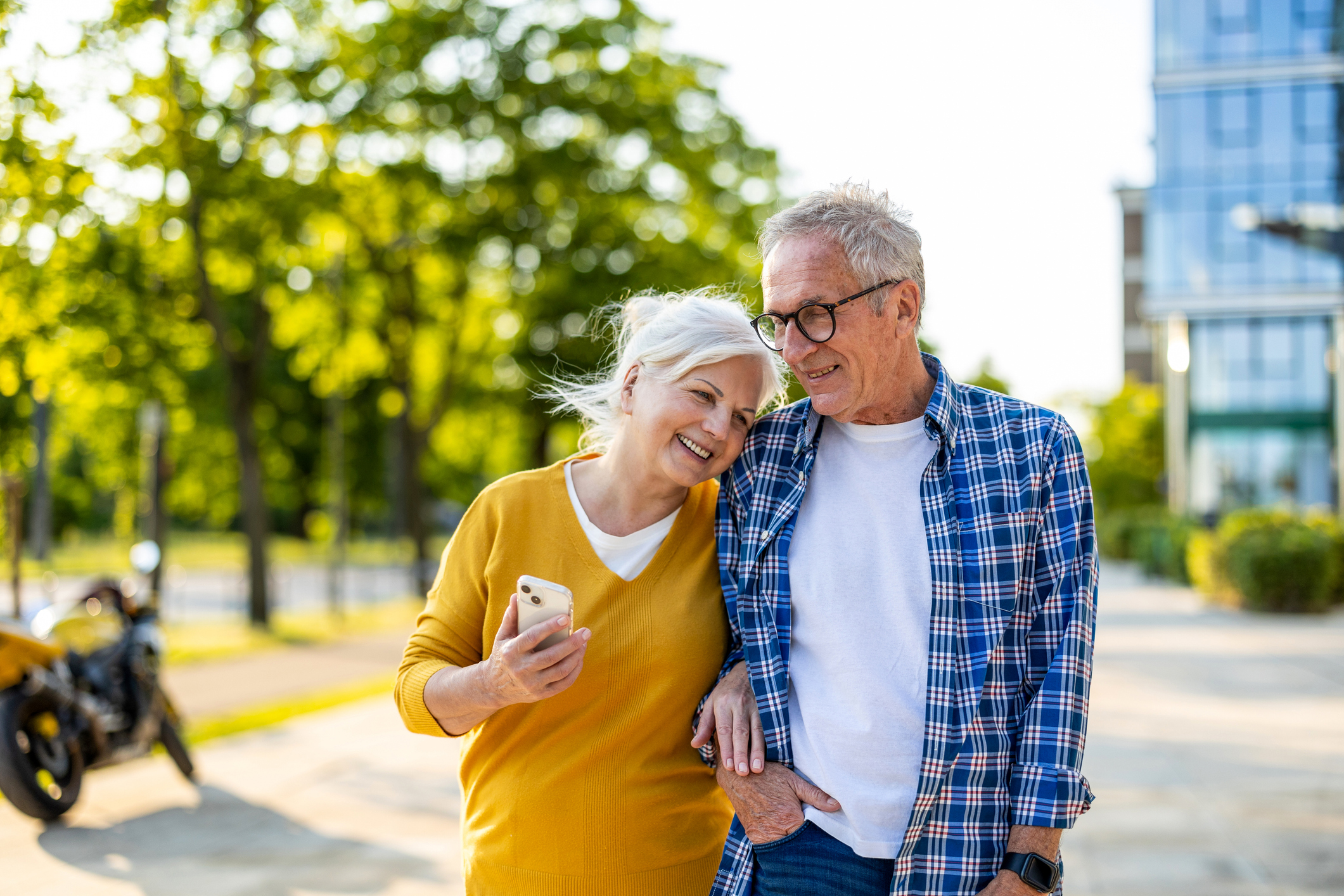Three Reasons You Need to Use a 529 Plan (and Two Reasons You Don't)
Tax benefits and a Roth IRA feature make 529 college savings plans attractive, but they're not a one-size-fits-all option.


There are many different approaches to saving for college, but 529 plans are used by more Americans than any other option — 30% of Americans use a 529 plan. It’s easy to see why, since 529 plans offer a variety of benefits. But they aren’t a one-size-fits-all solution, and it’s important to consider if they are the right plan for you and your family. Here are some key reasons to consider a 529, as well as reasons to consider alternatives.
Reason No. 1 to use a 529: Tax deferral and growth strategies.
One of the most well-known advantages of a 529 savings plan is that the earnings and growth on the investments grow tax-deferred. So long as the expenses you ultimately pay for with the funds are for qualified higher-educational expenses (such as tuition, books and school supplies, room and board), the investment growth and earnings are also tax-free.
In essence, the 529 plan confers the benefits of tax-deferred growth like in an IRA or 401(k) plan, but with the added advantage that taxes aren’t due on cash distributions when it’s time to take funds out. This is a federal tax benefit, which can be fairly substantial for investors in higher tax brackets. There are not many types of accounts that allow these types of tax benefits.

Sign up for Kiplinger’s Free E-Newsletters
Profit and prosper with the best of expert advice on investing, taxes, retirement, personal finance and more - straight to your e-mail.
Profit and prosper with the best of expert advice - straight to your e-mail.
Additionally, some states also allow for state tax deductions on contributions made into a 529 college savings plan. In my state of Colorado, for instance, there is a generous state tax deduction available — up to $22,700 per taxpayer, per beneficiary in 2024 for individual tax filers (or $34,000 per beneficiary per tax filing for joint tax return filers). That is a dollar-for-dollar reduction in state tax liability, which can be fairly powerful.
Certain states allow for tax deductions for contributions made to only their own state-specific plans, while other states will allow for tax deductions made to other states’ plans. Arizona, for example, allows up to $4,000 in state tax deductions for joint tax filers for contributions made to any 529 plan, not just Arizona 529 plans.
To understand the nitty-gritty details of your situation and state allocations, contact your financial adviser.
Reason No. 2 to use a 529: Gift tax benefits.
Taxpayers are allowed to gift a certain dollar amount each calendar year that is free of gift taxes. Normally, that means you can make an $18,000 gift each calendar year per individual (as of 2024). If you have a generous family member or extra cash to invest, this could be put in a child’s or grandchild’s 529.
However, due to special 529 rules, you can accelerate five years of contributions into a single calendar year so long as you file the appropriate forms with the IRS. That would mean an individual could contribute as much as $90,000 in one year to a beneficiary’s 529 without any gift tax ramifications. That would mean you can’t contribute funds free of gift tax for another four years, but typically there is a benefit to getting a larger amount of assets invested and generating growth and income now vs later.
Reason No. 3 to use a 529: Unused funds can be converted to a Roth IRA.
One issue with 529s has been if the plan is overfunded and the funds remain unused. For families on a tight budget, that creates a difficult choice between saving enough for themselves or providing ample funding for their kids' education. Beginning this year, the SECURE 2.0 Act added a new feature that allows up to $35,000 of unused 529 funds to be contributed to the beneficiary’s own Roth IRA over their lifetime.
There are some requirements that must be met, namely the 529 must be opened for at least 15 years, and the beneficiary must have enough earned income to make annual conversions into their Roth IRA. The contribution limits each calendar year match typical IRA contribution limits, so the full $35,000 amount will need to be made over successive calendar years provided eligibility is attained.
Since a Roth account generally provides tax-free distributions and does not require mandatory retirement distributions, converting assets to a beneficiary’s Roth IRA account could provide a lifetime of tax-free growth that helps give them a head start on their retirement savings. There is a good case to be made for planning to spend Roth IRAs last in retirement (dependent on each saver’s plan), meaning the assets can be invested more aggressively since they will not have mandatory distributions. This could create a good opportunity for maximized tax-free growth for the account beneficiary.
There is still some ambiguity to the new rules that need to be ironed out. Particularly, does the 15-year clock reset when a 529 beneficiary update is made? Or does the same clock reset when a 529 is rolled from one plan to another? Those are issues that should receive additional clarity in the future.
Reason No. 1 not to use a 529: Possible tax penalties.
Contributions to a 529 are considered a completed gift to the beneficiary, which can reduce the size of the gifter’s taxable estate. This may become a more important issue if Congress ends up shrinking the size of the estate tax exemption. Prior to 2018, the estate tax exemption was under $6 million, but is now $13.61 million per individual. As the government looks to find more sources of tax revenue, the estate tax exemption may come under the microscope in the future.
If a family needs funds saved for education to use for another purpose, it may be best to choose an investment option that provides greater flexibility when it comes to control. If you distribute funds from a 529 plan for non-qualified expenses, you’ll pay a 10% withdrawal penalty on the earnings portion of the withdrawal, and it will be taxed as income to the beneficiary. Some additional issues may arise, such as state-specific tax penalties or state income tax deduction recapture.
In short, if assets for a family member’s college savings can’t be invested long-term or earmarked, it might be better to consider investing in a taxable brokerage account or utilizing bank savings. These solutions won’t confer the same tax benefits, but will avoid the tax penalties if the assets need to be diverted to other purposes. If control of the funds is an issue, you can also utilize an UTMA, or custodial account, which allows the parent or custodian to direct the funds. Custodial accounts also confer the benefit of a portion (or potentially all) of the income produced from the account to be taxed at the beneficiary’s lower tax rate.
Reason No. 2 not to use a 529: College isn’t for everyone.
If there is uncertainty about the educational course of the beneficiary or child — perhaps they aren’t college-bound — it may not make sense to allocate a large investment to a 529 plan. There is a little flexibility in that 529 funds might be used for certain trade school or vocational programs, but only if they’re eligible for Title IV federal student aid. If a 529 owner has multiple children or grandkids, the ability exists to reallocate 529 assets to different blood relatives. However, if the family is small and there are few or no other beneficiaries to reallocate to, it would be prudent to avoid saving too much in a 529 plan.
Changes in 2019 also resulted in a few other 529 features. You can take a one-time distribution of up to $10,000 to make payments toward student loans or use up to $10,000 per year toward private school tuition. However, there is a “gotcha” with these two features — some states do not conform to the federal rules, meaning while the federal government would consider distributions for these purposes as qualified, your state may consider them non-qualified payments and assess tax penalties.
With changes in recent years, 529 plans have become more complex. It’s important to be aware of the pros and cons of investing in a college savings plan and to discuss them with your family and financial adviser team. Funding a college education can be very important to helping your family members achieve long-term success, and having the right strategy is critical.
Halbert Hargrove Global Advisors, LLC (“HH”) is an SEC-registered investment adviser located in Long Beach, California. Registration does not imply a certain level of skill or training. Additional information about HH, including our registration status, fees, and services can be found at www.halberthargrove.com. This blog is provided for informational purposes only and should not be construed as personalized investment advice. It should not be construed as a solicitation to offer personal securities transactions or provide personalized investment advice. The information provided does not constitute any legal, tax or accounting advice. We recommend that you seek the advice of a qualified attorney and accountant.
Related Content
- 529s: No Longer the Ho-Hum Investing Device for College
- 529 Plans: Give the Gift of Education (and Compounding)
- Using a 529 Plan? Here’s What to Keep in Mind
- The Best Ways to Pay for College Involve Starting Young
- Three Key Ways You Can Help a Child or Grandchild Pay for College
Get Kiplinger Today newsletter — free
Profit and prosper with the best of Kiplinger's advice on investing, taxes, retirement, personal finance and much more. Delivered daily. Enter your email in the box and click Sign Me Up.

Shane W. Cummings is based in Halbert Hargrove’s Denver office and holds multiple roles with Halbert Hargrove. As Director of Technology/Cybersecurity, Shane’s overriding objective is to enable Halbert Hargrove associates to work efficiently and effectively, while safeguarding client data. As wealth adviser, he works with clients in helping them determine goals and identify financial risks, creating an allocation strategy for their investments.
-
 What 401(k) Savers Near Retirement Can Do Amid Market Volatility
What 401(k) Savers Near Retirement Can Do Amid Market VolatilityWhether retirement is years away, a year or two out, or in the rearview mirror, here's how to handle uncertainty in your 401(k).
By Donna Fuscaldo Published
-
 The New Space Age Takes Off
The New Space Age Takes OffThe Kiplinger Letter From fast broadband to SOS texting, space has never been more embedded in peoples’ lives. The future is even more exciting for rockets, satellites and emerging space tech.
By John Miley Published
-
 Could You Retire at 59½? Five Considerations
Could You Retire at 59½? Five ConsiderationsWhile some people think they should wait until they're 65 or older to retire, retiring at 59½ could be one of the best decisions for your quality of life.
By Joe F. Schmitz Jr., CFP®, ChFC® Published
-
 Home Insurance: How to Cut Costs Without Losing Coverage
Home Insurance: How to Cut Costs Without Losing CoverageNatural disasters are causing home insurance premiums to soar, but don't risk dropping your coverage completely when there are ways to keep costs down.
By Jared Elson, Investment Adviser Published
-
 Markets Roller Coaster: Resist the Urge to Make Big Changes
Markets Roller Coaster: Resist the Urge to Make Big ChangesYou could do more harm than good if you react emotionally to volatility. Instead, consider tax-loss harvesting, Roth conversions and how to plan for next time.
By Frank J. Legan Published
-
 Why Homeowners Insurance Has Gotten So Very Expensive
Why Homeowners Insurance Has Gotten So Very ExpensiveThe home insurance industry is seeing more frequent and bigger claims because of weather, wildfires and other natural disasters.
By Karl Susman, CPCU, LUTCF, CIC, CSFP, CFS, CPIA, AAI-M, PLCS Published
-
 Stock Market Today: Uncertainty Proliferates: Dow Loses 1,014 Points
Stock Market Today: Uncertainty Proliferates: Dow Loses 1,014 PointsWeaker-than-expected consumer inflation data wasn't enough to stabilize sentiment during another volatile day for financial markets.
By David Dittman Published
-
 Zelle App Shut Down? Why Zelle Has Discontinued Its App
Zelle App Shut Down? Why Zelle Has Discontinued Its AppWith the Zelle app shut down, learn how you can still use Zelle and which other mobile payment apps you might want to consider.
By Paige Cerulli Published
-
 Going Through Probate? How to Find the Right Attorney
Going Through Probate? How to Find the Right AttorneyJust having the skills and experience to do the job isn't enough. The probate attorney you hire needs to have the right temperament for your particular case.
By John R. Silva, Esq. Published
-
 Widow's Penalty: Three Ways to Protect Your Finances
Widow's Penalty: Three Ways to Protect Your FinancesHigher Medicare premiums, smaller Social Security payments, bigger tax bills … Financial changes can hit hard when a spouse dies. How to counter the blow.
By Ashley Terrell, IAR Published